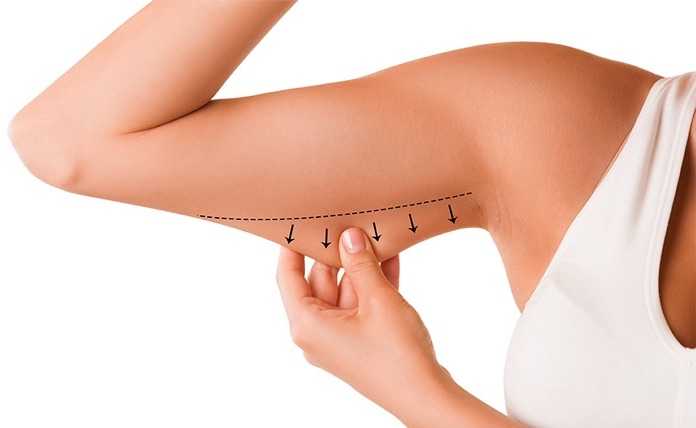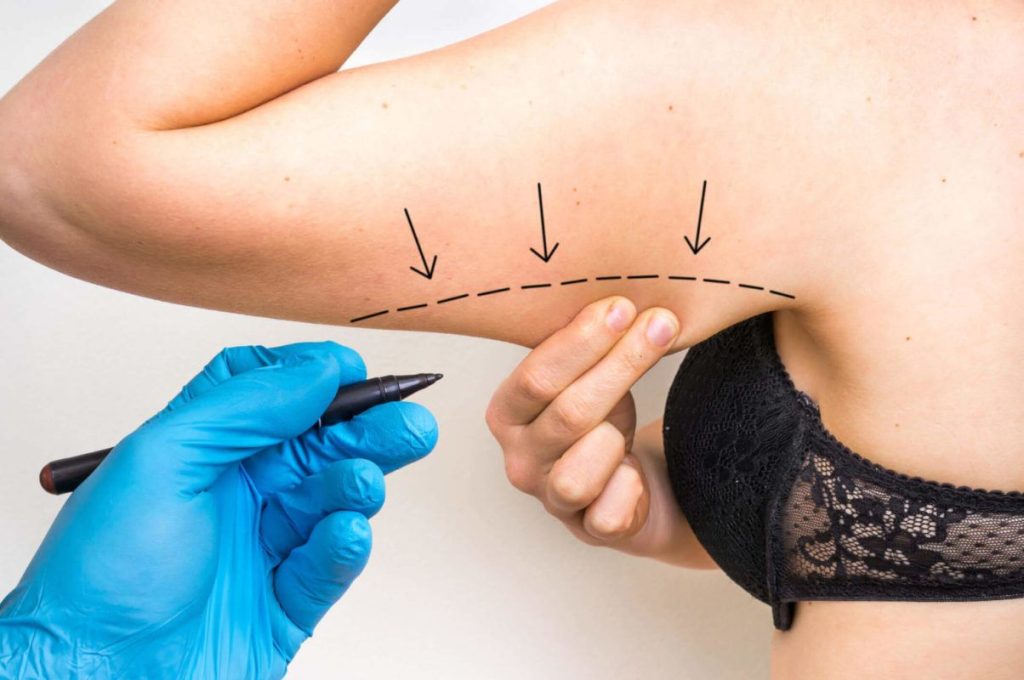Ultrasound-guided BBL (Brazilian Butt Lift) is revolutionizing the world of cosmetic procedures, offering a fusion of safety and precision. This advanced technique utilizes ultrasound imaging to enhance fat transfer results, ensuring accuracy while minimizing risks associated with traditional methods. By integrating this cutting-edge technology, plastic surgeons are able to sculpt the body with greater control and finesse, tailoring outcomes to meet individual aesthetic goals.
With ultrasound guidance, patients gain peace of mind knowing their procedure is informed by real-time visual feedback. Whether seeking subtle enhancement or dramatic transformation, ultrasound-guided BBL stands at the forefront of personalized cosmetic surgery.
Overview of Brazilian Butt Lift Procedures
BBL Popularity
The Brazilian Butt Lift (BBL) has become a highly sought-after cosmetic procedure. It’s known for enhancing the shape and volume of buttocks. This popularity stems from its ability to provide natural-looking results.
Patients choose BBL over other methods because it uses their own fat. Thus, it reduces the risk of rejection seen with implants. Celebrities have also contributed to this trend by showcasing their curves on social media.
Fat Grafting Basics
Fat grafting is central to the BBL process. Surgeons remove fat from areas like the abdomen or thighs. Then, they purify it before injecting it into the buttocks.
This method offers dual benefits: slimming one area while augmenting another. The result is a more balanced body profile that many find appealing.
Distinction in Augmentation
BBL differs significantly from other gluteal augmentation options:
-
Implants involve inserting synthetic materials.
-
Fillers are temporary solutions that require frequent touch-ups.
In contrast, BBL uses a patient’s own fat for a more permanent solution without foreign objects in the body.
To summarize, ultrasound-guided Brazilian Butt Lifts stand out among cosmetic procedures for butt enhancement due to their use of natural tissue and comprehensive reshaping capabilities.
Understanding Traditional BBL Techniques vs Ultrasound Guidance
Manual Palpation
Traditional Brazilian Butt Lift (BBL) procedures rely on manual palpation. Surgeons use their hands to feel the underlying structures. This method requires a high level of skill and experience.
With manual techniques, surgeons estimate where fat should go. They can’t see inside the body. So, they guide by touch alone.
Visual Mapping
In traditional BBLs, visual mapping is key. Surgeons draw on the skin before surgery to mark areas for fat transfer.
Visual maps help plan the procedure but don’t show what’s happening beneath the skin during surgery.
Real-Time Imaging
Ultrasound-guided BBL uses real-time imaging for precision. It allows surgeons to see under the skin as they work.
This technique offers a clear view of tissues and organs. Doctors place fat more accurately with this guidance.
Precision Placement
Precision in fat placement is crucial for successful results in BBLs.
-
Traditional methods lack direct visibility.
-
Ultrasound guidance provides exact placement locations for better outcomes and symmetry.
Surgeons using ultrasound can avoid critical areas like blood vessels more effectively than with palpation alone.
Advantages of Ultrasound Technology in BBL
Enhanced Visualization
Ultrasound technology offers clear images of the body’s internal structures. During a Brazilian Butt Lift (BBL), this means surgeons can see tissue layers with great detail. It leads to more precise fat placement.
Surgeons inject fat into specific areas for desired fullness and shape. With ultrasound, they avoid guesswork. They see where the needle goes, ensuring each layer gets the right amount of fat.
Reduced Risks
One major benefit is the reduced risk of complications. Traditional BBL techniques rely on feel and experience alone, which can lead to errors. But with ultrasound guidance, surgeons have improved control over the procedure.
They monitor real-time images during surgery. This reduces chances for mistakes like injecting fat too deep or not evenly spreading it out.
Better Outcomes
Patients often seek natural-looking results from their BBL procedures. Ultrasound-guided BBLs hold potential for better symmetry and aesthetics due to increased accuracy in fat transfer.
The precision offered by ultrasound allows balanced shaping of both buttocks cheeks. This means patients are more likely to be satisfied with their final appearance after recovery.
Safety Enhancements with Ultrasound-Guided Techniques
Risk Minimization
Ultrasound-guided BBL helps to minimize risks. The technology enables surgeons to avoid injecting fat too deeply, which reduces the risk of a fat embolism. This is a serious complication where fat enters the bloodstream and can block blood vessels.
Surgeons use ultrasound for real-time monitoring. They see exactly where they are injecting the fat. This ensures that it stays away from deep muscle layers and blood vessels.
Surgeon Confidence
The clarity provided by ultrasound imaging boosts surgeon confidence. With clear images, surgeons make informed decisions during surgery. They know they are placing the fat at the exact depth needed for each patient’s individual needs.
This advanced technique reflects utmost care in patient safety and expertise in cosmetic procedures.
With advancements like these, patients can trust that their procedure uses current best practices for both results and safety.
The Process of Ultrasound-Guided BBL
Patient Preparation
Before the procedure begins, patient marking is essential. Surgeons carefully outline areas on the body to guide fat transfer. This ensures precision during the surgery.
Once markings are complete, anesthesia is administered for comfort. Patients remain relaxed throughout their transformation.
Fat Transfer
The core of ultrasound-guided BBL involves using an ultrasound device during fat grafting. Surgeons monitor the process in real-time with this technology.
-
It allows them to see beneath the skin.
-
They can place fat accurately and evenly.
This step-by-step approach maximizes safety and aesthetic results.
Live Feedback
Surgeons benefit from immediate visual feedback via ultrasound imaging. They adjust their techniques as necessary while operating.
-
Adjustments are made on-the-spot for better outcomes.
-
This live guidance helps avoid complications associated with traditional methods.
The ability to react instantly is crucial for patient safety and satisfaction.
Technology Proficiency
For optimal outcomes, surgeons must be proficient in both BBL procedures and ultrasound technology. They need extensive training to handle these advanced tools effectively. Proficiency leads to:
-
Higher success rates,
-
Enhanced safety profiles,
-
Superior aesthetic results.
Patient Experiences with Ultrasound-Guided BBL
Reduced Pain
Patients who have undergone ultrasound-guided BBL report significant differences in their experience compared to traditional methods. Testimonials frequently mention less pain during and after the procedure. This is a major benefit, as it can lead to a more comfortable recovery process.
Many individuals highlight the minimal bruising they experienced, which is often attributed to the precision of ultrasound guidance. By avoiding unnecessary trauma to surrounding tissues, patients enjoy a smoother healing journey.
Recovery Ease
The postoperative period following an ultrasound-guided BBL seems notably easier for many patients. Personal accounts emphasize quicker recovery times and straightforward care instructions.
This ease of recovery not only contributes to patient comfort but also reduces downtime significantly. As such, individuals are able to return to their daily activities sooner than they might with conventional techniques.
Aesthetic Satisfaction
Satisfaction rates concerning the aesthetic results of ultrasound-guided BBL are high among patients. They appreciate how experienced surgeons use sound waves for accurate fat placement, leading to desired body contours.
Patients often express happiness with both the immediate and long-term outcomes of their procedures. The ability of ultrasound guidance in achieving natural-looking enhancements plays a key role in this satisfaction.
Preparing for an Ultrasound-Guided BBL Surgery
Medical Evaluations
Before undergoing an ultrasound-guided BBL, patients must complete preoperative evaluations. These assessments ensure that individuals are fit for surgery and help set realistic expectations. A thorough discussion with the surgeon about the desired outcome is crucial.

Patients should be ready to discuss their medical history and any medications they take. The surgeon may require blood tests or other exams to check overall health. Understanding potential risks and outcomes helps align patient expectations with what is achievable through plastic surgery.
Lifestyle Adjustments
Making lifestyle changes before a BBL procedure can improve results and reduce recovery time. Surgeons often advise stopping certain medications that could increase bleeding risk during surgery. Patients might also need to avoid smoking or alcohol, as these can hinder healing.
A balanced diet and good hydration are important too. Nutritious foods support the body’s ability to heal, while staying hydrated keeps skin elastic. Some surgeons recommend specific vitamins or supplements to bolster recovery.
Surgeon Selection
Choosing a qualified surgeon is perhaps the most critical step in preparing for a BBL procedure involving ultrasound guidance. It’s essential to find a professional skilled in navigating subcutaneous space using ultrasound technology.
Prospective patients should look for surgeons who have performed numerous ultrasound-guided bbls successfully.
-
Reviewing before-and-after photos of previous surgeries provides insight into each surgeon’s work.
-
Certifications from recognized plastic surgery boards signify expertise.
Finding a team that understands your needs ensures you get care tailored specifically for your appearance goals.
Postoperative Recovery and Results Longevity
Recovery Phases
After an ultrasound-guided BBL, patients go through several recovery phases. Initially, there is a resting phase that can last up to two weeks. During this time, patients may experience discomfort and swelling. It’s crucial to follow the surgeon’s guidance on rest and limited activity.
The next phase involves gradual return to normal activities. Over the course of several weeks, patients start to feel more comfortable as healing progresses. By following post-operative instructions carefully, most people can resume their routines within six weeks.
Maintenance Tips
To maintain results after surgery, certain steps are essential. First off, it’s important to avoid putting pressure on the treated areas for at least two weeks post-surgery; this means no sitting directly on your buttocks or lying on your back.
A balanced diet and regular exercise help preserve fat grafts in the long term. Wearing compression garments as recommended by your doctor aids in shaping and supporting new contours.
Longevity Factors
The longevity of transferred fat cells depends on various factors:
-
The technique used during surgery.
-
How well you adhere to post-op care.
-
Your body’s natural metabolism which affects how quickly fat cells are absorbed or retained.
Generally speaking, a portion of transferred fat may be reabsorbed by the body over time; however with proper care some improvements from an ultrasound-guided BBL can last for years.
Summary
Ultrasound-guided Brazilian Butt Lift (BBL) procedures represent a significant advancement in aesthetic surgery, enhancing safety and patient outcomes. By integrating ultrasound technology, surgeons achieve greater precision in fat transfer, reducing the risk of complications and promoting a smoother recovery. This method not only aligns with the principles of Google’s E-E-A-T by ensuring expertise and trustworthiness in cosmetic procedures but also underscores the importance of informed decision-making for patients considering a BBL.
As we’ve explored the journey from preoperative preparation to postoperative care, it’s clear that ultrasound-guided BBL is a game-changer for both patients and surgeons. If you’re contemplating a BBL, seek out a board-certified surgeon skilled in ultrasound techniques to discuss your options. Remember, your safety and satisfaction are paramount. Embrace the future of cosmetic enhancement with confidence by considering an ultrasound-guided approach for your transformation.
Frequently Asked Questions
What is a Brazilian Butt Lift (BBL)?
A Brazilian Butt Lift is a cosmetic procedure that enhances the shape and size of the buttocks using fat transfer.
How does ultrasound guidance improve BBL procedures?
Ultrasound guidance improves precision in fat placement, enhancing safety and results quality.
Are there any safety benefits to ultrasound-guided BBL?
Yes, it reduces risks by allowing real-time visualization during fat transfer.
What should I expect during an ultrasound-guided BBL process?
Expect detailed imaging for accurate fat placement and contouring under ultrasound guidance.
Can patient experiences vary with ultrasound-guided BBL compared to traditional methods?
Patients often report higher satisfaction due to improved outcomes and reduced complication rates.
How do I prepare for an ultrasound-guided BBL surgery?
Preparation involves medical evaluations, discussing expectations, and following preoperative instructions from your surgeon.
What is the longevity of results from an ultrasound-guided BBL?
Results can be long-lasting if patients maintain stable weight and follow postoperative care guidelines.




















